
B.C. failing to protect 81% of critical habitat for at-risk species: government docs
B.C. allows industrial logging in critical habitat for at-risk species — part of the reason...
B.C.’s NDP government has sanctioned logging and road building in nine areas the party said during the fall election campaign it had “protected” as old-growth, according to information unearthed by the Wilderness Committee.
A Ministry of Forests bulletin outlines how forestry companies can log and build roads in 157,000 hectares of second-growth forests in the 353,000 hectares the government announced in September were protected from development to kickstart a “new approach to old forests.”
Premier John Horgan campaigned on the announcement, releasing a letter in October stating, “In early September, we moved to protect nearly 353,000 hectares of old-growth forests. But that’s just the beginning.”
“Many of our old-growth stands are worth more standing up than they ever could be cut down, especially if we take a holistic approach that acknowledges broader benefits for communities and the environment.”
Torrance Coste, national campaign director for the Wilderness Committee, said it is “stunning” to now discover it will be business as usual in the second-growth forests included in the deferral areas.
“At the bare minimum, people deserve to be told honestly by the government what is going on,” Coste said, calling the government’s suggestion that 353,000 hectares of old-growth are being protected “factually incorrect and incredibly misleading.”
“If the whole thing is built on a foundation of dishonesty about what they have done to date, we don’t have a hope,” he said.
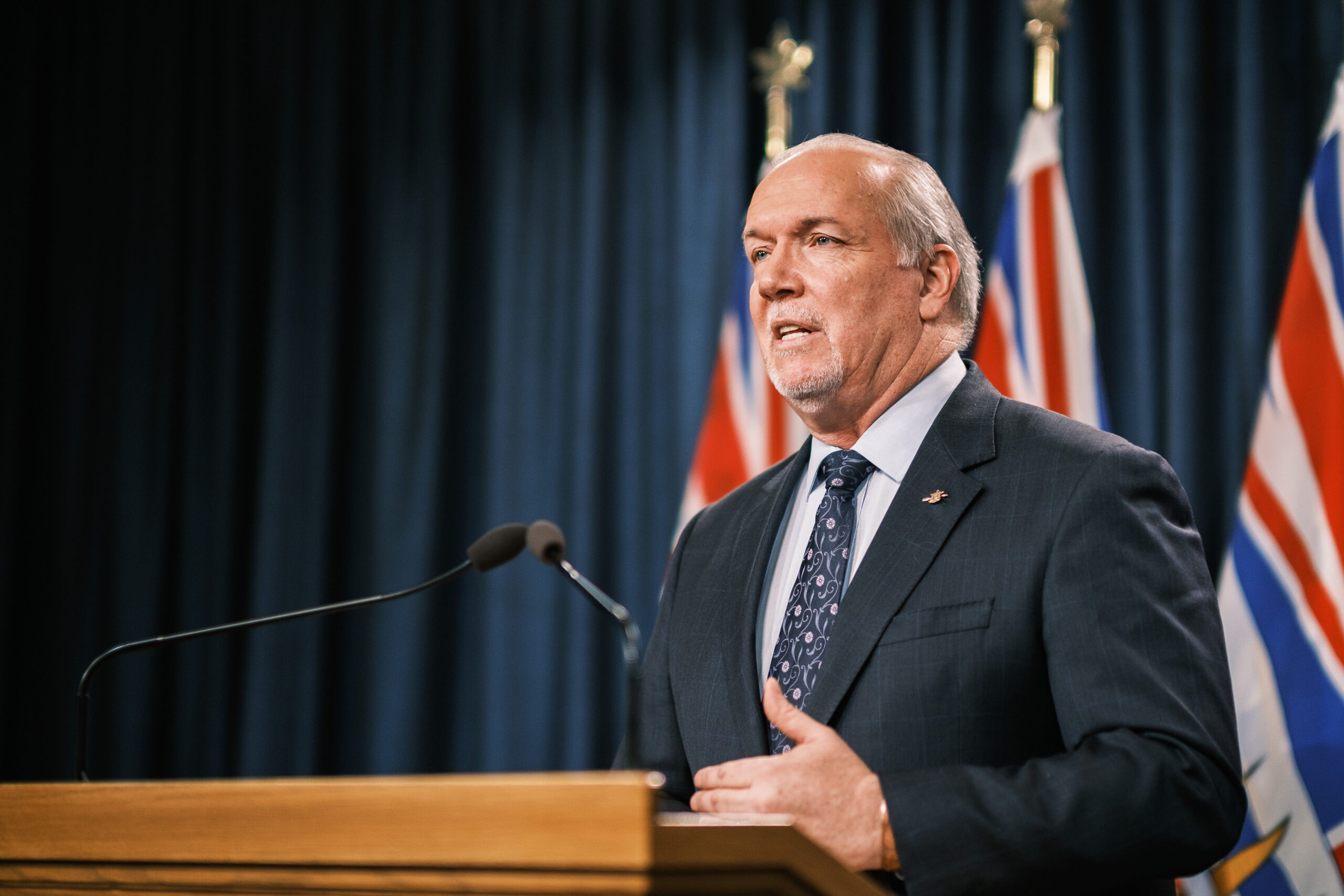
Premier John Horgan is facing scrutiny over logging that can take place in areas the government campaigned on protecting. Photo: Province of B.C. / Flickr
Tzeporah Berman, Stand.earth international program director, is also dismayed by the government’s portrayal of the nine deferral areas as protected old-growth.
“The B.C. government has either made a mistake or was being disingenuous when they said they were protecting old-growth and then deferred a bunch of areas that weren’t even threatened by logging or made up of big trees,” Berman said in a news release.
While Berman and Coste emphasized the urgency of protecting disappearing old-growth, confusion lingers around the definitions being used to describe old trees and just what, exactly, government protected in September.
In an email response to questions from The Narwhal, a spokesperson with the Ministry of Forests said information on the government’s website is being updated to clarify that the 353,000 protected hectares contains 196,000 hectares “old-growth forest” and 157,000 hectares of second-growth forest, which is open to forestry.
The province’s deferrals for old-growth are temporary and will expire after two years.
When asked to clarify its definition of old-growth forest, the province directed The Narwhal to a recent strategic review report that describes old-growth as “a generic term to describe forests with old trees. In British Columbia, for management purposes, this is usually described according to the age of the trees (usually 250+ years on the coast and 140+ years in the interior).”
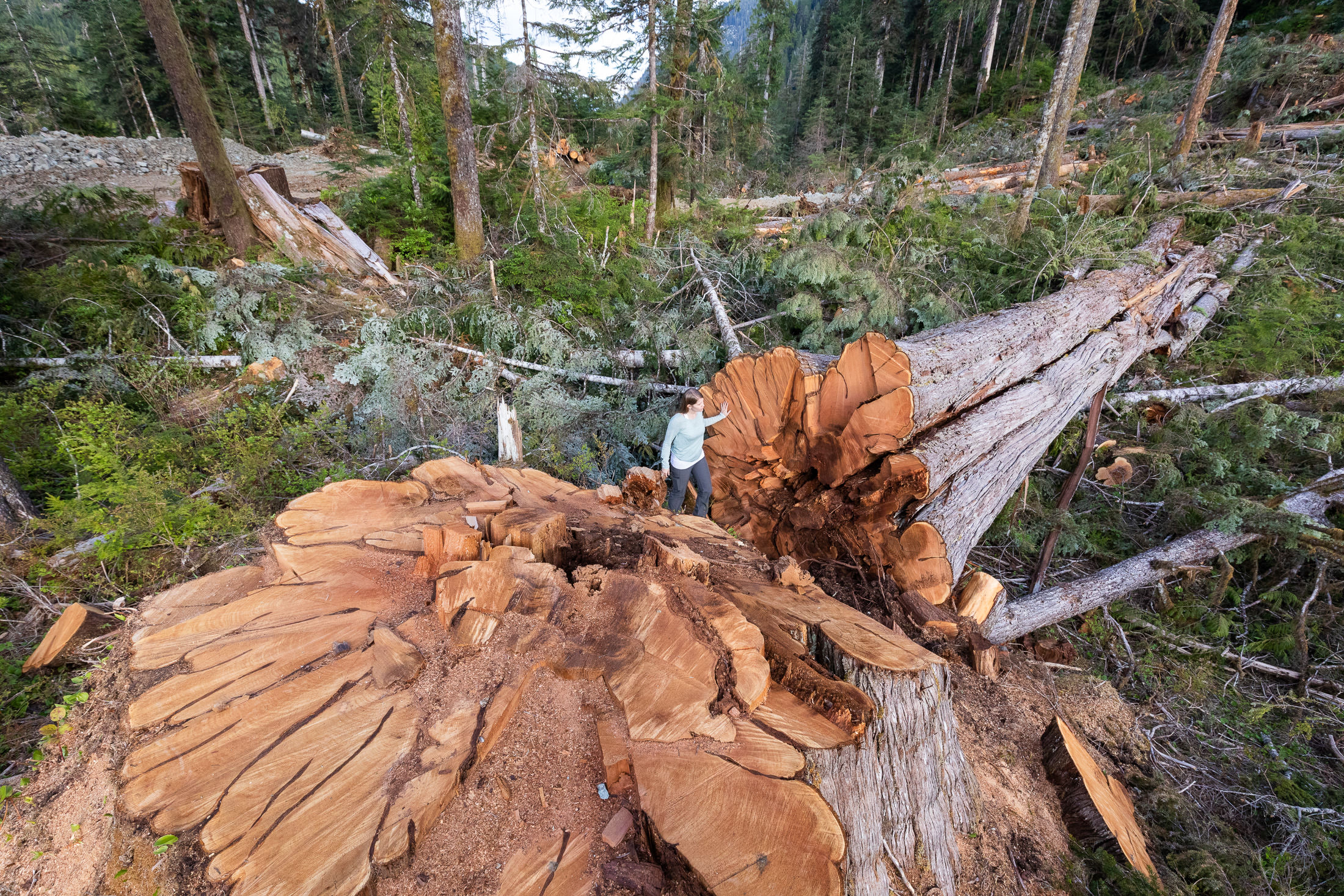
An enormous, freshly fallen western red cedar in a BC Timber Sales-issued cutblock in the Nahmint Valley on Vancouver Island, B.C. The logging of giant trees in the valley led to an investigation into the province’s failure to properly designate old-growth forests and failure to protect large trees from being harvested. Photo: TJ Watt
The province’s retroactive clarification is raising new concerns that B.C.’s old-growth protections are actually doing very little to protect intact forests and the province’s remaining ancient trees.
The province says nearly 10 million hectares of old-growth is already under some form of protection or not available for harvesting throughout B.C., while 3.75 million hectares of old-growth forest remains available for logging.
In an analysis released in the fall, scientists Karen Price, Rachel Holt and David Daust estimated that only about 3,800 hectares (38 square kilometres) of the 415,000 hectares of B.C.’s remaining productive old-growth were included in the province’s new deferral areas. High-productivity forests, where the biggest trees are found, contain the greatest biodiversity and are home to the most endangered species, such as mountain caribou and marbled murrelet.
Mapping by an independent GIS mapper and conservation organizations subsequently revealed that much of the 353,000 hectares announced for old-growth protection was already under some sort of protection. About half of the total protected areas consisted of high-elevation old-growth with small, stunted trees or second-growth forests.
The Ministry of Forests said there are different criteria and methods for defining productive old-growth and the province will be talking to the scientists and others to explore the findings and compare them to provincial data.
Old-growth can be patchy and occur in small stands, intermixed with younger forests, so the whole area is included in the deferrals, the ministry said.
New roads cannot be constructed in the old-growth areas within the protected hectares, but roads can be built in second-growth areas to allow for harvesting and existing roads can be maintained or deactivated, the ministry said.
The debate over figures and definitions underlines the need for a new approach, according to Coste.
“I don’t think there’s public permission to log 1,000-year-old trees in 2021 and there are 1,000-year-old trees being cut down today in B.C.,” he said. “That giant juggernaut of a ministry is built around enabling logging and putting up barriers to protection.”
Logging second-growth in deferral areas is also likely to put the surrounding old-growth at risk, Coste said.
“If you are building roads and there are additional clearcuts adjacent to the old-growth, that’s going to stack the deck for more erosion and more wind damage.”
It will also make the old-growth, much of it in hard to reach areas, more easily accessible and therefore more economical for logging companies to move in once the two-year deferral period expires, Coste said.
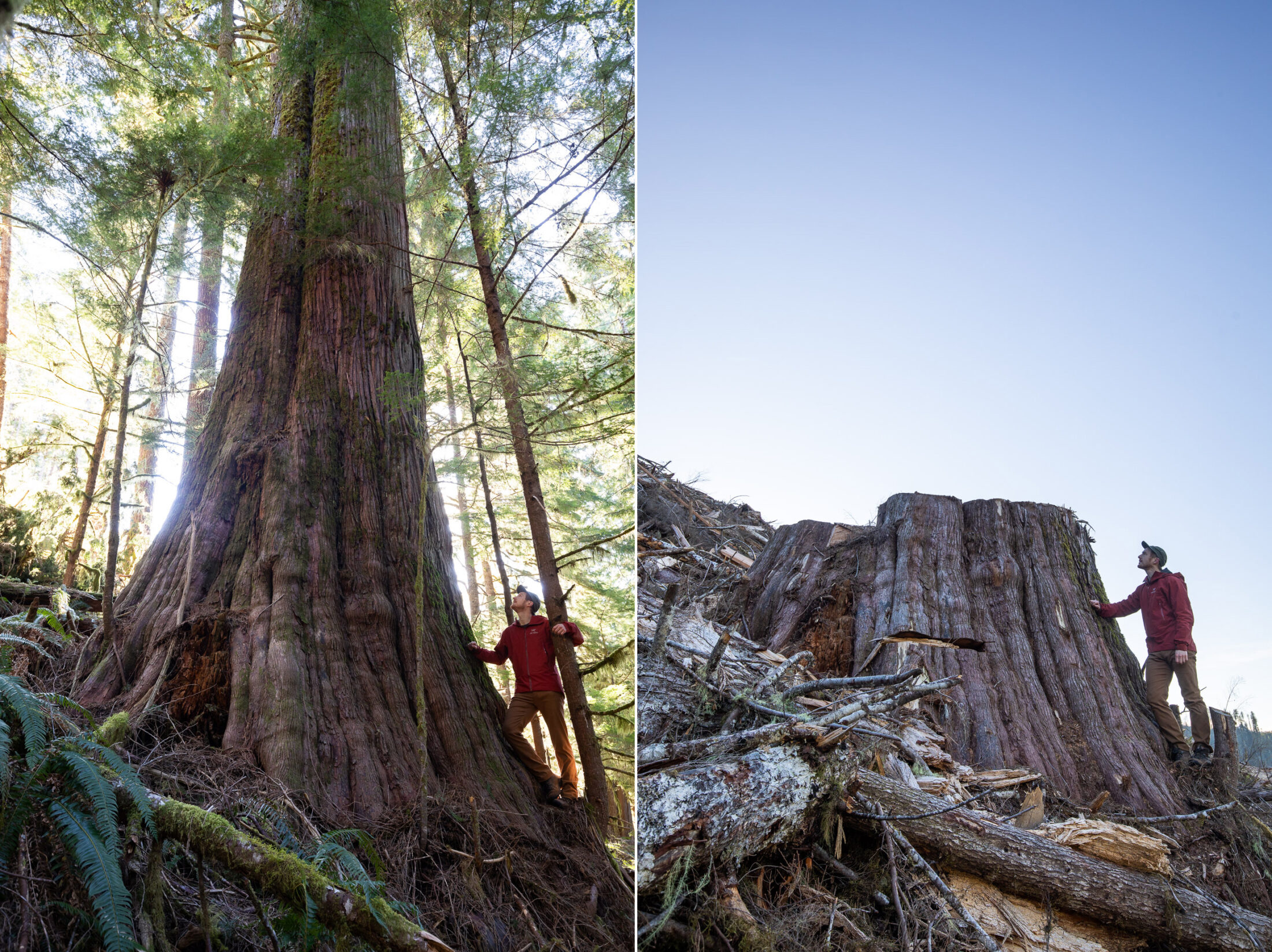
Photographer TJ Watt sands beside the stump of a giant old-growth cedar recently felled in the Caycuse watershed on Vancouver Island. The Ancient Forest Alliance has for months been campaigning for immediate and long-term protections for remaining ancient forest in the watershed along Haddon Creek where this clearcut is now located. Photo: TJ Watt
The government’s announcement of the deferral areas coincided with the September release of an old-growth strategic review report, A New Future for Old Forests, written by Garry Merkel, a forester and member of the Tahltan Nation, and Al Gorley, a forester and former chair of the Forest Practices Board.
Merkel and Gorley concluded that B.C. forest policies remain fixed on timber supply rather than values such as biodiversity, saying a paradigm shift is needed to better manage forests in B.C. The report recommended deferring development in old forests with a high risk of irreversible biodiversity loss.
In their report, Merkel and Gorley note that “old forests are more than old or big trees. They are a product of ancient and unique ecosystems, and their characteristics vary greatly across the province. They can only be effectively managed in the context of broader public priorities, including the interests of current and future generations.”
The government’s simultaneous announcement of the nine old-growth deferral areas was immediately criticized for not including high-profile at-risk hotspots such as the central Walbran valley and Fairy Creek watershed, seemingly flying in the face of the strategic review panel’s recommendation.
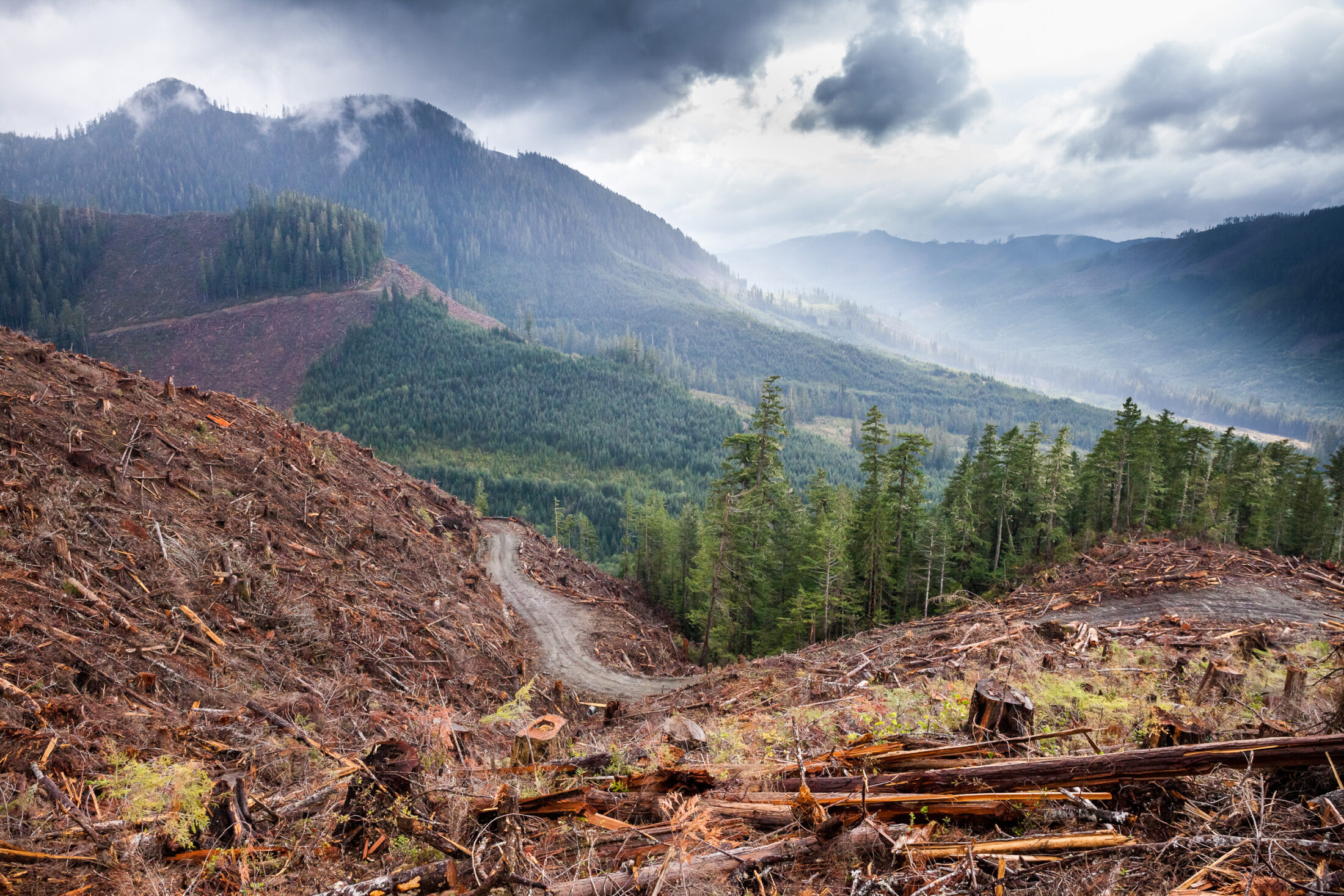
Clearcut logging in the Walbran valley has been highly controversial on Vancouver Island. The Wilderness Committee, which is campaigning for greater protections for the Walbran, estimates clearcutting on Vancouver Island is occurring at the rate of 34 soccer fields per day. Despite calls for protection, the Walbran valley was not included in the deferrals announced by the government in September. Photo: TJ Watt
The Merkel and Gorley report emphasized the need for Indigenous leaders and communities to be full partners in revamping forest management. The Union of B.C. Indian Chiefs has called on the province to immediately defer logging in all threatened old-growth forests and to implement all 14 recommendations — which include increased Indigenous involvement and the prioritization of ecosystem health — made by Merkel and Gorley.
“What governments and corporations need to do is to take a step back and view old-growth forests not as commercialized products to be harvested and sold, but as the bedrock foundations of a healthy, biodiverse environment that First Nations have been stewards over since time immemorial,” Grand Chief Stewart Phillip said in the Stand.earth news release.
A Ministry of Forests spokesperson told The Narwhal, “we heard loud and clear that old way of protecting old-growth forests wasn’t working for anyone.”
The spokesperson said engaging with Indigenous nations and identifying at-risk old-growth forests are priorities for the ministry as the government moves to implement the recommendations.
“The panel report … is complex and involves a wide range of forestry policies and practices. Old-growth management has been a challenging issue in B.C. for decades and it will take time to explore new approaches.”
The looming threat of climate change is often cited as one of the compelling reasons for protecting what remains of B.C.s old-growth forests.
A new report commissioned by Sierra Club BC found nine of the 15 climate-related risks identified in B.C.’s 2019 Strategic Climate Risk Assessment are influenced by logging, including water shortages, extreme precipitation and landslides and severe wildfire seasons.
The government assessment looked at the possible effects of climate change on timber resources but not at how logging increases climate risks to communities. Sierra Club report author Peter Wood, an independent forestry consultant, said he was surprised the B.C. government failed to connect the dots.
“I was just overwhelmed by how much scientific evidence there is that logging has a direct effect on flooding, on fires, on drought, on heat waves,” Wood told The Narwhal. “And yet nowhere in this otherwise comprehensive report did they even consider the potential that the logging industry was making these risks worse.”
Many B.C. communities, including Peachland and Grand Forks, have already suffered from flooding and fires because of the impact of logging, yet that was not mentioned in the climate risk assessment, Wood said.
Read more: Grand Forks flooding victims file class-action lawsuit against B.C. government, forestry companies
Clearcutting increases the frequency and intensity of forest fires because of dead biomass left behind, while road networks increase the likelihood of human-caused fires, according to the report.
“Younger trees are extremely flammable due to dense spacing, thin bark and low-hanging branches. They are also more susceptible to insect outbreaks, leading to dead standing trees that are susceptible to fire,” says the report, which also points to how clearcut logging disrupts local hydrology, increasing risks of flooding and droughts.
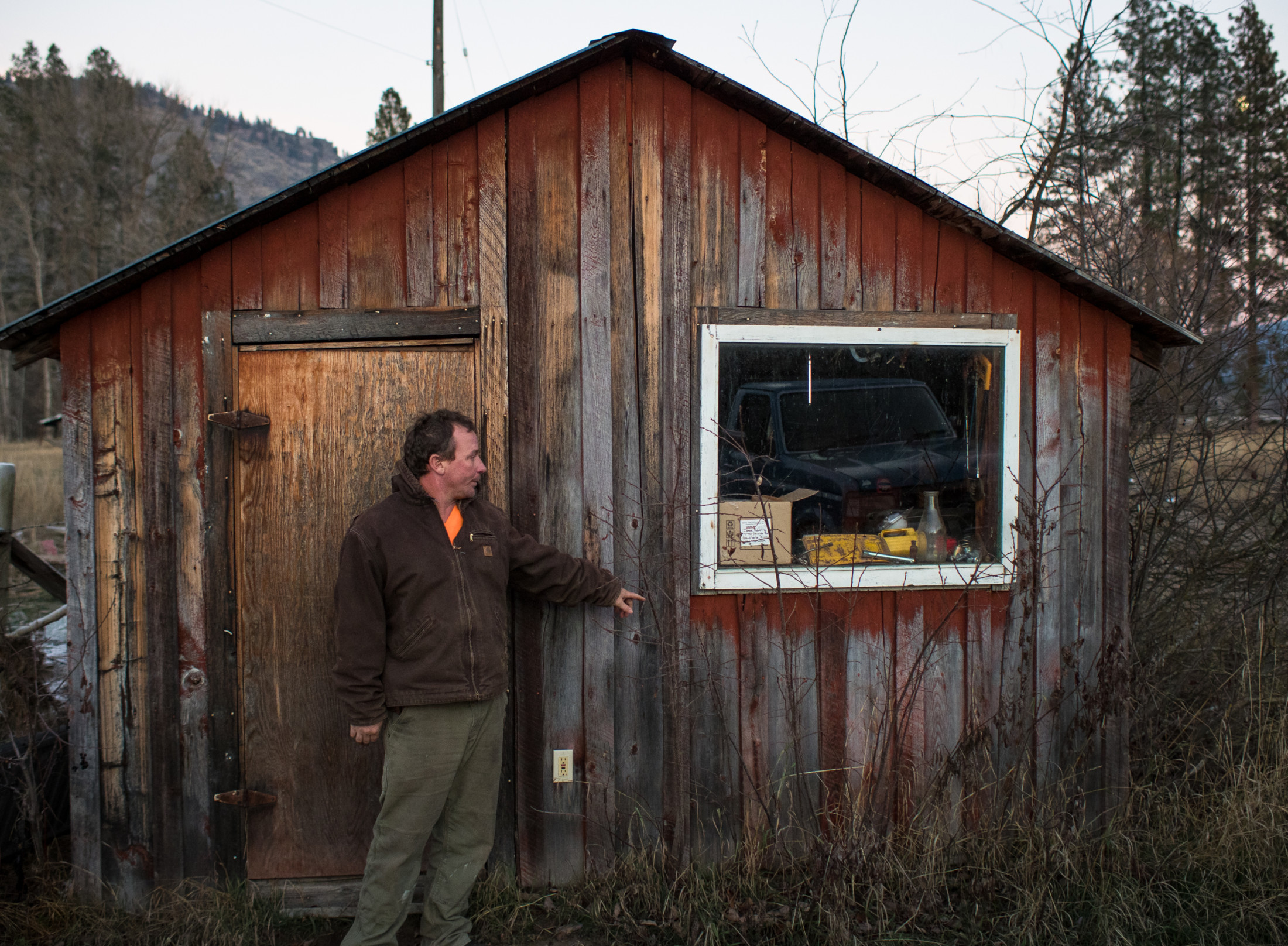
Grand Forks resident, Jesse Redding, shows where the high water mark was in 2018 when flood waters covered much of his property. Flooding in Grand Forks has been connected to high levels of logging in the surrounding watershed. Photo: Louis Bockner / The Narwhal
In contrast to areas that have been logged, old intact forests act as a moderating influence, supporting the ecosystem and lowering the risk to surrounding communities, Wood said.
He said implementing the recommendations from the old-growth strategic review panel — as the BC NDP promised during the election campaign — would help address climate risks and prioritize the health and resilience of the forest and the safety of adjacent communities.
Climate risks can be mitigated by engaging Indigenous decision-makers and applying a climate risk impact test to all forest management decisions, according to the report.
Kekinusuqs Judith Sayers, Nuu-chah-Nulth Tribal Council president, said First Nations have long been lobbying the provincial government for the right to manage forest in their territories.
“This report reflects what First Nations have always known, that the provincial governments must change the way they manage forests immediately,” Sayers said in a news release.
Jens Wieting, Sierra Club BC senior forest and climate campaigner, is concerned the province has a blind spot when it comes to the severe impacts of logging and how forestry practices contribute to climate catastrophes.
“We are entering a new era of climate emergency and forest management must be adapted to mitigate many of the risks,” said Wieting, who wants to see interim protection for all at-risk forests and a timetable for the province to implement Merkel and Gorley’s recommendations.
“This is an opportunity to transition to a more sustainable model of forestry that is jointly designed with First Nations to build more resilient communities,” Wieting continued. “However, time is running out as these threats will only increase in magnitude with further warming and logging of intact forest.”
Get the inside scoop on The Narwhal’s environment and climate reporting by signing up for our free newsletter. Angello Johnson’s shoulders burn, and his arms...
Continue reading
B.C. allows industrial logging in critical habitat for at-risk species — part of the reason...

Lake sturgeon have long been culturally significant and nutritionally important to First Nations in Ontario,...

Mark Carney and the Liberals have won the 2025 election. Here’s what that means for...

